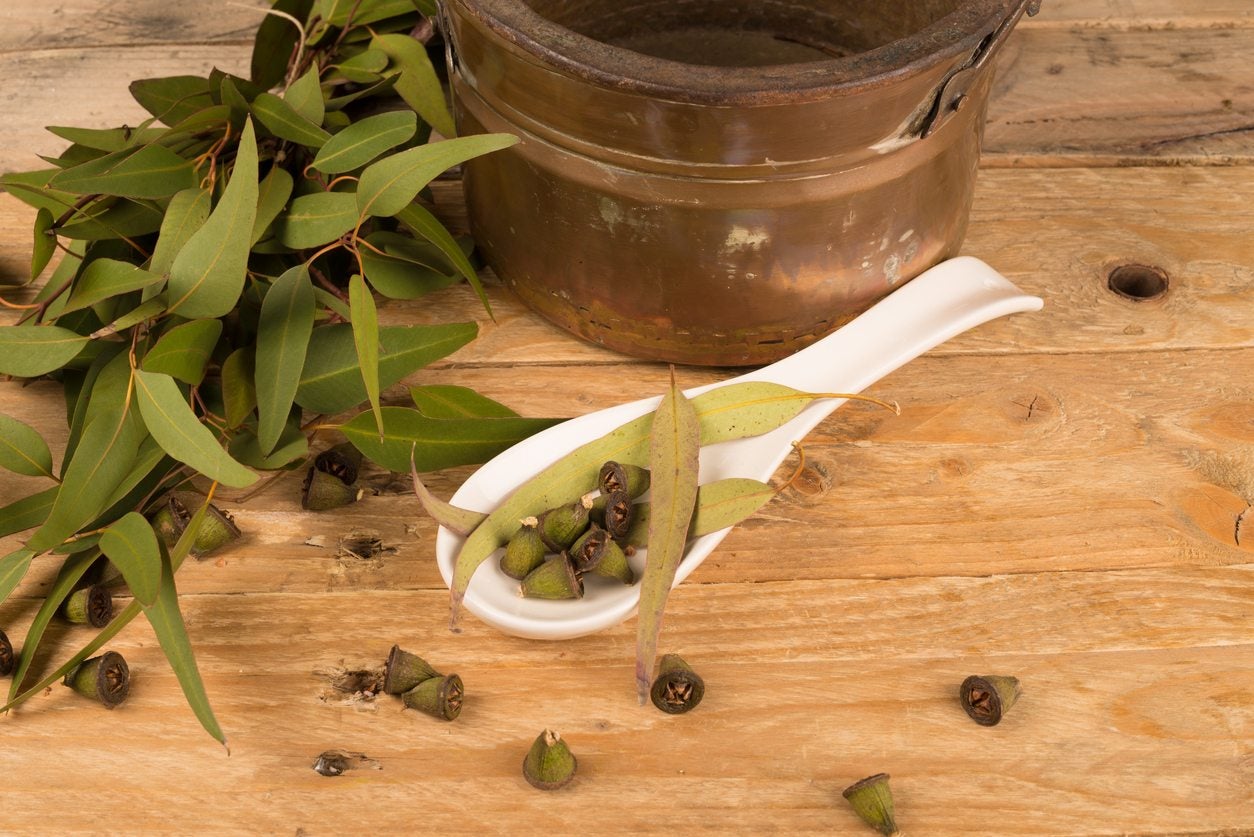Eucalyptus Plant Care: Tips On Growing Eucalyptus Herbs


Eucalyptus is marked by distinctive, fragrant oil in the leathery leaves, bark, and roots, although the oil may be stronger in some species. The aromatic oil provides a number of herbal eucalyptus benefits, as described in this article.
Eucalyptus Herb Information
There are more than 500 species of eucalyptus, all native to Australia and Tasmania, ranging from small, shrubby plants that grow in containers to others that grow to great heights of 400 feet (122 m.) or more. Most are easy to grow in the mild climate of USDA plant hardiness zones 8 through 10.
You’re probably familiar with the aroma of eucalyptus oil, which is an important component in many common products such as cough drops, throat lozenges, ointments, liniments, and chest rubs. Eucalyptus oil is also an effective insect repellent and is often used to treat minor cuts and wounds.
For home gardeners, herbal tea made from fresh or dried leaves is the most convenient way to take advantage of herbal eucalyptus benefits. It’s easy to dry entire eucalyptus branches and then strip the dry leaves later. Alternatively, you can strip the fresh leaves, which can then be dried and stored in glass containers. Sip the tea or use it as a gargle to ease sore throats or spritz cool tea on insect bites or minor skin irritations. To soothe sore muscles or aching joints, add a few leaves to a warm bath.
How to Grow Eucalyptus as an Herb
While globe eucalyptus is most popular in American gardens, you may want to consider a smaller variety such as E. gregsoniana, E. apiculata, E. vernicosa, or E. obtusiflora, all of which reach mature heights of 15 to 20 feet (5-6 m.).
Start with the largest pot available. Once the tree outgrows the pot, it’s best to discard it and start over with a fresh seedling, as eucalyptus trees grown in pots don’t take to transplantation to the ground. If you live in a warm climate and you want to grow eucalyptus in the ground, it’s best to make that decision from the beginning.
Keep in mind that eucalyptus needs a location in full sunlight, with protection from the wind. If you live in a chilly climate and want to grow eucalyptus in a pot, you can always leave it outdoors during the summer, then bring it in before temperatures drop to near freezing in autumn.
Sign up for the Gardening Know How newsletter today and receive a free copy of our e-book "How to Grow Delicious Tomatoes".
Growing Eucalyptus Herbs
If you’re the adventurous type, you can plant eucalyptus seeds a few weeks before the last frost in your area. Plan ahead because the seeds require a stratification period of about two months.
Eucalyptus seedlings don’t always transplant well, so plant seeds in peat pots, which help prevent transplant shock. Place the peat pots in a warm area and mist them frequently to keep the soil evenly moist, but never saturated. Move the seedlings outdoors after the last frost.
Eucalyptus needs full sunlight and well-drained soil (or potting soil, if you’re growing eucalyptus in a pot). If you’re growing eucalyptus indoors, place the tree in the sunniest window, preferably south-facing.
Eucalyptus Plant Care
Water eucalyptus regularly, especially during warm, dry weather. Eucalyptus is drought tolerant and will rebound from a slight wilt, but it may not recover if the foliage is allowed to shrivel. On the other hand, avoid overwatering.

A Credentialed Garden Writer, Mary H. Dyer was with Gardening Know How in the very beginning, publishing articles as early as 2007.